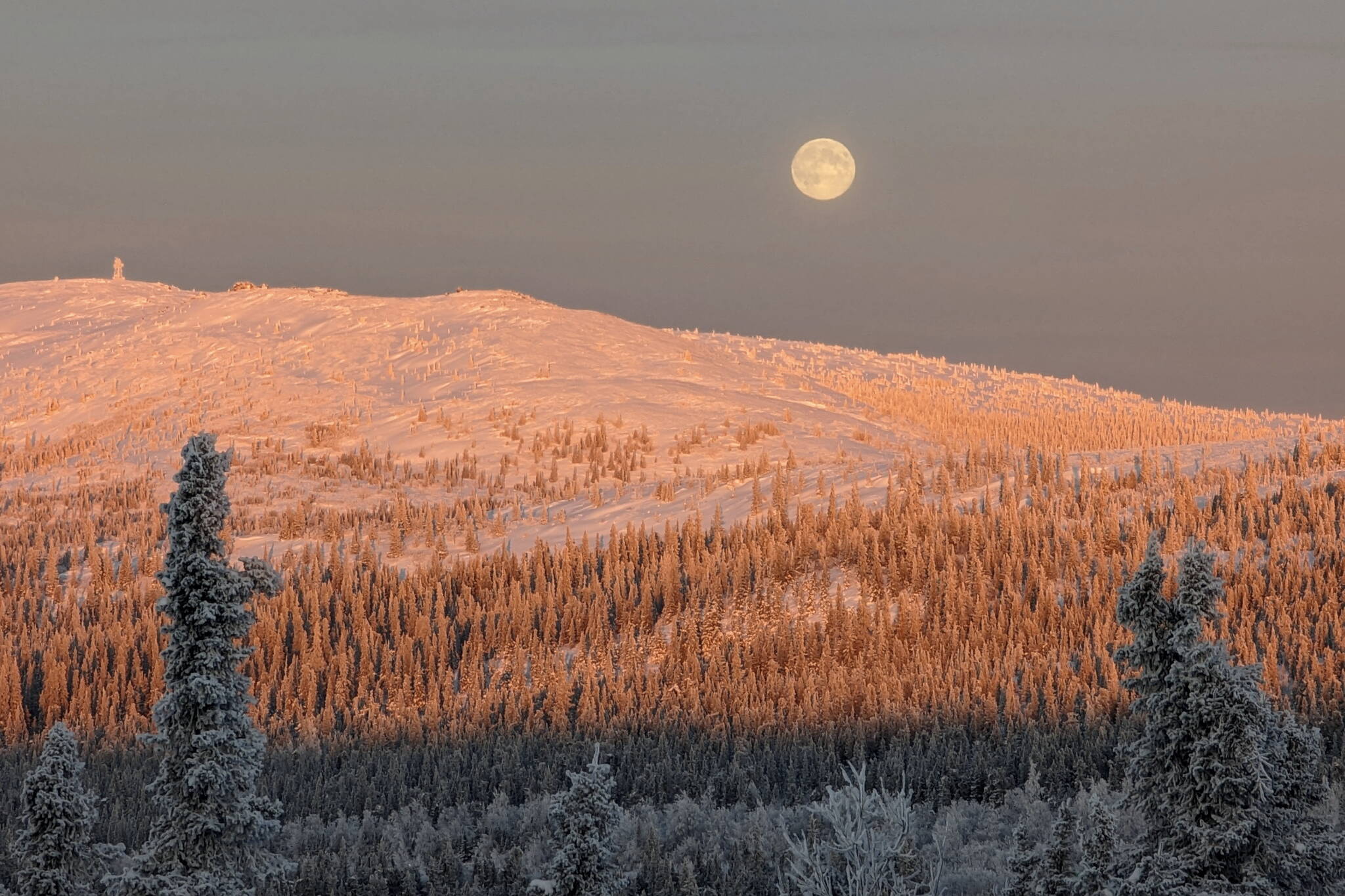Has the moon seemed exceptionally noticeable this winter? There’s a reason: The full moon currently never sets for many Alaskans.
During the winter of 2023-2024, we are passing through a period when the moon is at one extreme in its precession cycle. The full moon is now higher in the sky than it will be at any other time during the next 18.6 years.
People of ancient civilizations noticed this pattern, and the Druids living in southern England more than 3,000 years ago incorporated it into their alignment of the monoliths at Stonehenge.
North of the Arctic Circle, the sun never rises during the winter months and never sets during the summer. A similar situation prevails for the moon. However, the lunar Arctic Circle is not fixed like the solar Arctic Circle, but changes its latitude with pendulum-like regularity over the years.
The lunar Arctic Circle is now near its southernmost position, causing the full moon to never set for a good number of Alaskans. It swings down in the north (like the midnight sun), but will never set below the horizon for observers living north of Wasilla.
A full moon is always on the opposite side of the earth from the sun (it has to be, otherwise, it wouldn’t be a full moon). But the earth’s orbit around the sun is not precisely lined up with that of the moon’s orbit around the earth. If the orbits did lie in the same plane, we would have eclipses every month.
The moon’s orbit around the earth is inclined about 5 degrees from the earth’s orbit around the sun, and it precesses around the earth. The most common analogy of precession is that of a spinning top as it slows down. An arrow pointing through its axis would wander around in a circle.
The new moon rises in the southeast and sets in the southwest, but as the lunar month wears on and the moon waxes, the rising point swings further and further to the left (east) and the setting point moves further and further to the right (west).
So, enjoy the company of the full moon, Alaskans. It will not be this faithful again until the winter of 2041.
• Since the late 1970s, the University of Alaska Fairbanks’ Geophysical Institute has provided this column free in cooperation with the UAF research community. Glenn Shaw is a professor emeritus of the Geophysical Institute and wrote this story at the same part of the lunar cycle in 1986.

